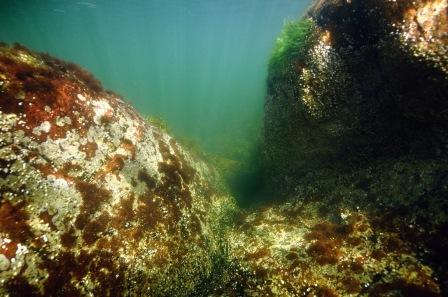ECONET
Assessment and guidance for achieving an ecologically coherent network of HELCOM MPAs1 in the Baltic Sea (ECONET)

What is ECONET?
The HELCOM ECONET project aims to assess the ecological coherence of the network of marine protected areas in the Baltic Sea. In addition, the project intends to provide guidance on where to designate further HELCOM MPAs1 in order to improve the ecological coherence of the network.
Background
The main drivers of this project are the goals set in the HELCOM Recommendation 35/1 SYSTEMOF COASTAL AND MARINE BALTIC SEA PROTECTED AREAS (HELCOM MPAs1) to “ensure, when selecting new areas, that the network of HELCOM MPAs is ecologically coherent and takes into account connectivity between sites including for example migration routes, species mobility and areas of special ecological significance such as spawning areas”, and further to “according to the Aichi target 11 [of the UN Convention on Biological Diversity (CBD)], by 2020 10% of coastal and marine areas, especially areas of particular importance for biodiversity and ecosystem services, shall be conserved through an effectively and equitably managed, ecologically representative and well-connected system of protected areas and other effective areabased conservation measures”.
Assessing the ecological coherence of the network of marine protected areas in the Baltic Sea
The ecological coherence of the marine protected areas in the Baltic Sea is being assessed in 2015. The assessment will build on the previous HELCOM MPA assessments and the development in the European Commission for a European wide assessment method (unpublished report by Deltares to EC). It will make use of the data in the newly modernized and updated HELCOM MPA database.
The assessment of ecological coherence will apply the criteria of representativity, replication, connectivity and adequacy.
Representativity
assesses different types of areal coverage, such as coverage of MPAs in
the Baltic Sea sub-basins or in the coastal and offshore zones. Replication describes the number of protected conservation features in the assessment area, while
connectivity
describes the connection between the separate MPAs and measures whether
the group of MPAs actually function as a network. Connectivity
is affected not only by the physical distance between the sites, but
also by species’ migration and dispersal, and the major currents of the
Baltic Sea. Adequacy assesses quality aspects such as MPA age, level of protection and pressures threatening the conservation objectives.
The results from the assessment will be employed when proposing possible new sites to be established as protected areas, with emphasis on improving the ecological coherence of the network.
The previous assessment of ecological coherence of the network of marine protected areas in the Baltic Sea was done in 2010, simultaneously with the previous overview of the network (BSEP 124B: Towards an ecologically coherent network of well-managed Marine Protected Areas). It was concluded that despite positive development in previous years the network was still not ecologically coherent. The main problems were a lack of connectivity between different BSPAs2 and uneven distribution of the protected areas, in particular a lack of protected areas in the EEZ.
1) Former HELCOM BSPAs.
2) In 2014 the acronym was changed from BSPAs to HELCOM MPAs.
For more information, please contact:

Ms. Ulla Li Zweifel
Professional Secretary
(Gear WG, State and Conservation WG)
ullali.zweifel@helcom.fi
Tel: +358 46 850 9198
Skype: helcom64
